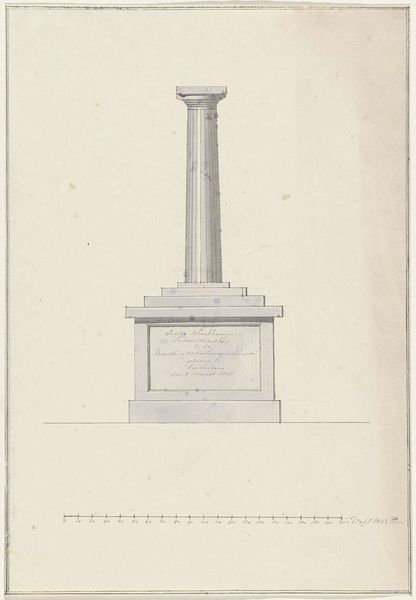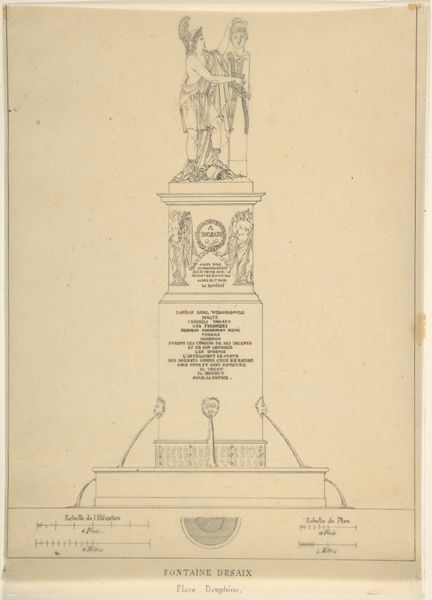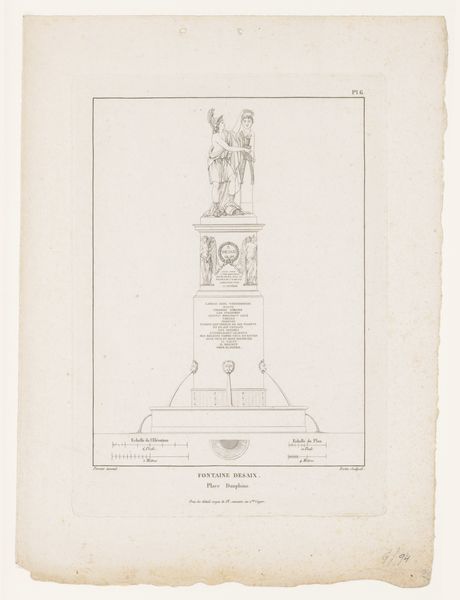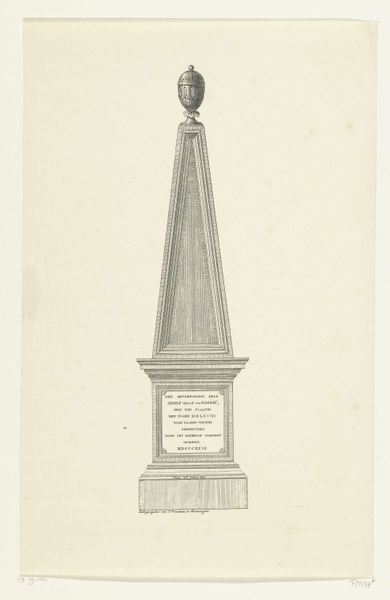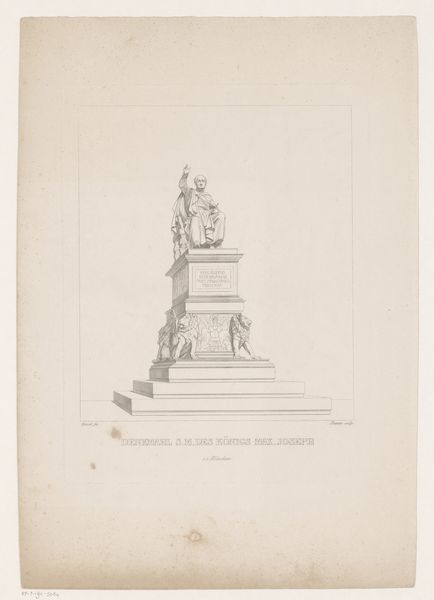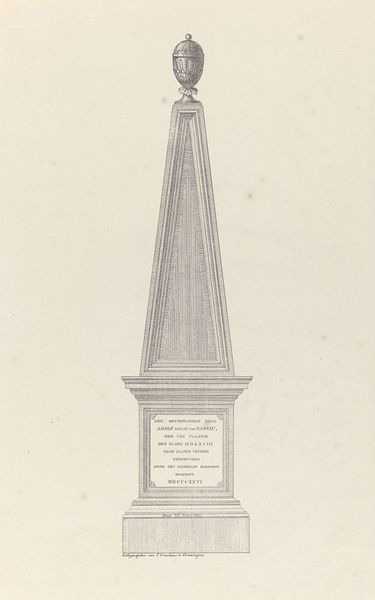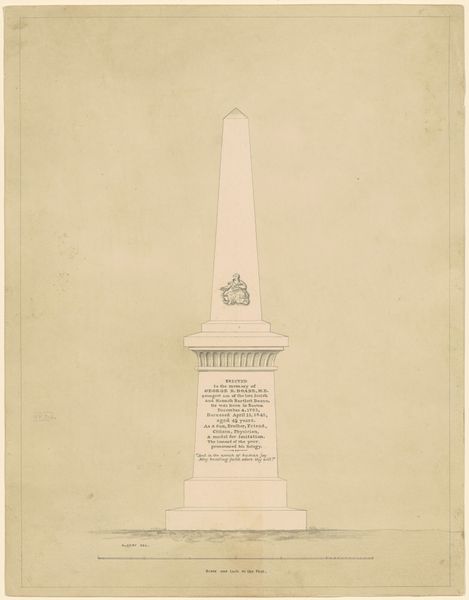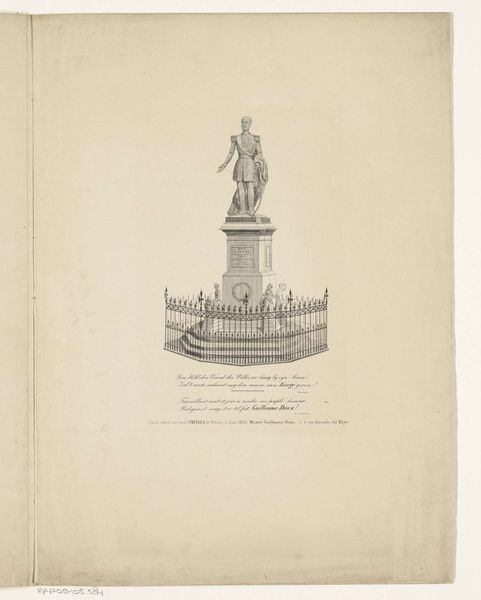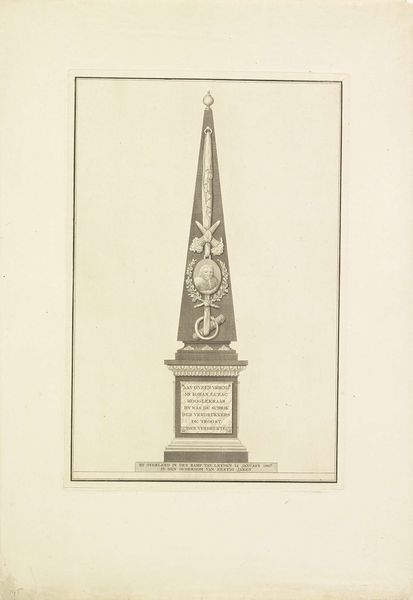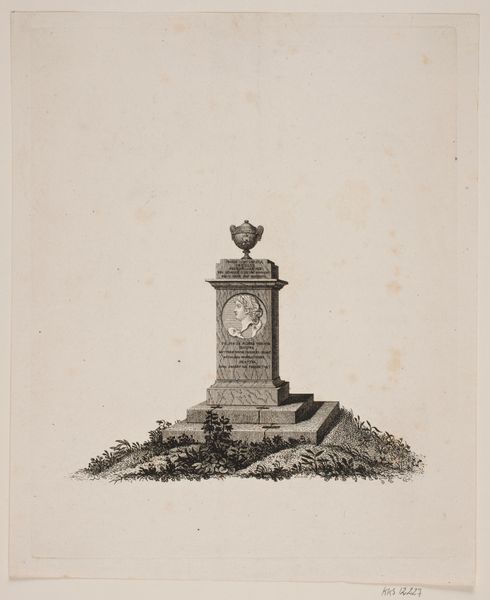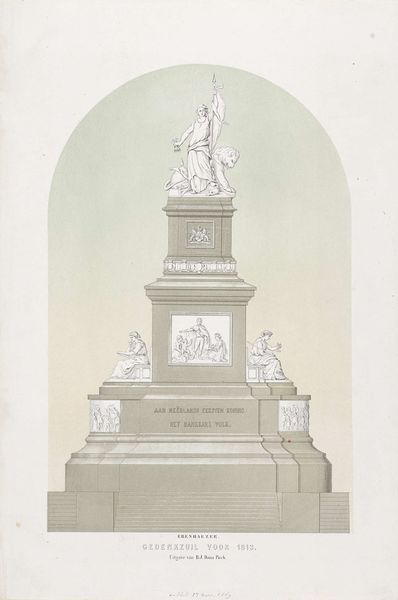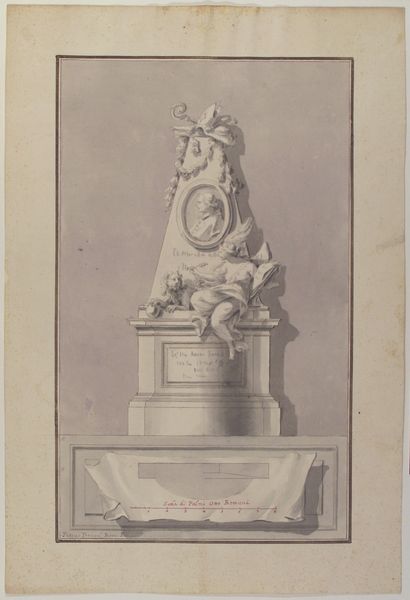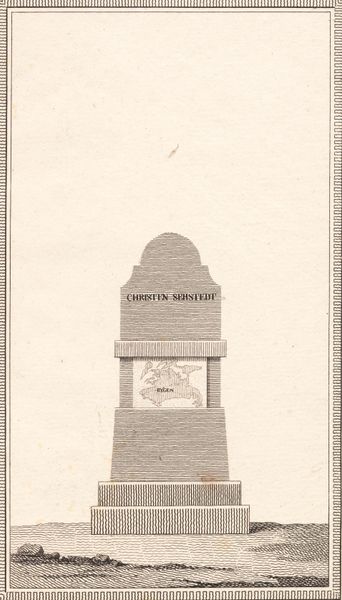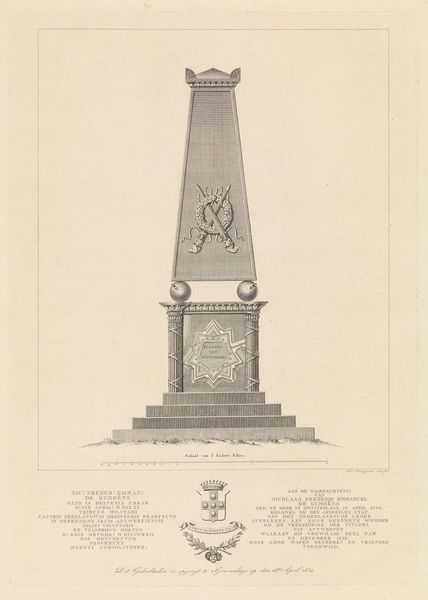
drawing, paper, pencil
#
portrait
#
pencil drawn
#
drawing
#
aged paper
#
light pencil work
#
neoclassicism
#
parchment
#
pencil sketch
#
light coloured
#
old engraving style
#
paper
#
personal sketchbook
#
old-timey
#
geometric
#
pencil
#
pencil work
#
academic-art
Dimensions: height 572 mm, width 445 mm
Copyright: Rijks Museum: Open Domain
Curator: Here we have "Gedenkteken voor vice-admiraal Zoutman," or "Memorial for Vice Admiral Zoutman," created anonymously in 1846. It's a pencil drawing currently residing in the Rijksmuseum. What's your first impression? Editor: A ghostly apparition of remembrance. The pale pencil work gives it a delicate, almost ephemeral quality, like a memory fading at the edges. The monumentality of the subject clashes a bit with the gentle rendering. Curator: Exactly. The drawing, made on paper with pencil, captures a memorial dedicated to Vice Admiral Zoutman. Its neoclassical style emphasizes geometric shapes and order. Given the date, we can infer it reflects a specific way in which the Dutch public remembered and chose to commemorate its naval heroes after a period of intense naval conflicts in prior decades. Editor: Yes, and consider the wreath and palm fronds—universal symbols of honor and victory, carefully inscribed around the Admiral’s name. How these repeated images and visual tropes created collective values! Yet the somewhat spare execution also lends it a sense of almost clinical observation. Curator: Agreed. Though it has all the familiar trappings of neoclassical memorial art, there’s a lightness of touch here. There isn't the visual noise you see in history painting and full-sized portraiture of this era; instead, just clear architectural rendering coupled with potent and clear imagery. Editor: This very "lightness", as you say, suggests a society grappling with the costs of naval dominance, searching for a fitting way to acknowledge sacrifice without lapsing into unbridled militaristic celebration. The memorial, in its depicted state, suggests careful mediation of grief, glory, and state power. Curator: Indeed, its simplicity serves as a poignant counterpoint to potential bombast, and perhaps a quieter way of integrating his story into Dutch maritime identity. Thank you; I did not have this point of view earlier. Editor: The politics of imagery! That’s how I see things. Curator: A beautiful and very thought-provoking reflection, thanks for opening it up for me!
Comments
No comments
Be the first to comment and join the conversation on the ultimate creative platform.
